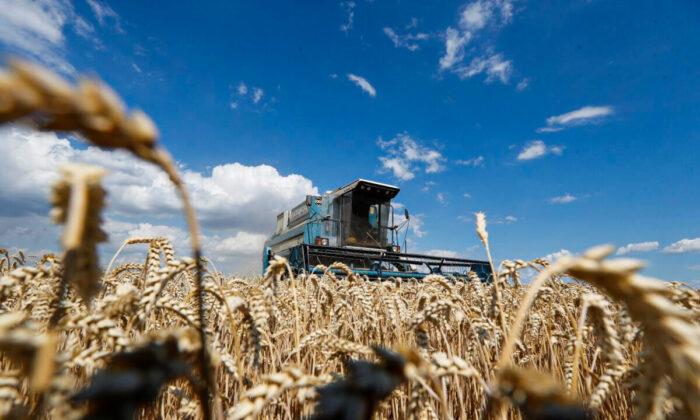The conflict in Ukraine and the sanctions on Russia are having a major impact on the world’s grain supplies, which will dramatically raise the cost of food along with energy and debt the longer the fighting continues.
“Recent projections by UNCTAD estimate that the world economy will be a full percentage point of GDP growth lower than expected due to the war, which is severely disrupting already tight food, energy, and financial markets.”
If the spring planting season in Ukraine is delayed for a few more weeks and the disruption of key regional exports is not addressed, there will likely be long term consequences, such as rising food shortages, limited fertilizer supplies, a major global recession, and a restructuring of supply chain networks.
The ability to produce crops in Ukraine right now and moving that production out of the region has been severely disrupted.
Millions of Ukrainians have fled from the agricultural regions due to the war, causing a labor shortage. Land mines are also being planted in fields, while freedom of movement is restricted in the conflict zones.
Experts estimate that 50 percent of Ukrainian wheat production and 25 percent of corn production is currently in the conflict zone.
This makes it hard for farmers to get their crops planted and even if they are harvested, there would still be major logistical challenges to delivery.
International freight carriers are largely prohibited from sending ships into the Black Sea region, while the insurance rates have skyrocketed.
“There’s a lot that we are not talking about in terms of the overall issues that can come from the Ukrainian-Russian conflict, particularly if it extends over a year, two or three,” said Richard Kottmeyer of FTI Consulting, Inc., at a April 14 webinar hosted by the American Feed Industry Association (AFIA).
“If the war ended today, we would have food inflation widely for three years,” he said. “That’s significant. As the war continues, food inflation and the number of years continues to get worse.”
The agricultural industry was already hurting from pandemic induced labor shortages and the EU’s Farm to Fork Strategy, which is an attempt to reduce the environmental and predicted climate impact of food production.
The Ukraine crisis added another layer of existing pressure to the market, with food inflation likely to hit levels not seen in 20 plus years, said Kottmeyer.
Together, Ukraine and Russia provide around 30 percent of the world’s wheat and barley, around 20 percent of its maize, and more than 50 percent of its sunflower oil.
The United States could increase exports of corn and wheat by 200 million bushels each, but that would only make up 10 percent of the shortfall in wheat and about 17 percent of that in corn.
The major agricultural exporters, based on current global wheat stocks, will not be able to make up the deficits due to the loss of the Ukrainian-Russian grain market.
Corn shortages may possibly be covered but the margin to accomplish that is increasingly tighter, Kottmeyer said.
He believes that commodity prices will continue to rise, with some analytical models showing corn at over $12 a bushel and a recession that will probably hit the EU, which may lose up to 3 to 4 percent of its GDP this year.
Russia is also the world’s top natural gas exporter and the second-largest exporter of crude oil.
Russia and Belarus, which has also been sanctioned by the West, contribute a combined total of about 20 percent of fertilizer exports.
Most of the world’s potash is from the region as well, which is needed to make agricultural fertilizer.
“It looks like Russia and Belarus are limiting shipment and production,” Kottmeyer said, explaining, “with limited supply, Europe is unlikely to get allocations. India may be the most at risk for lack of fertilizer because they are some of the earliest to plant.”
These disruptions will harm developing countries the most, said the U.N., with the report warning of higher food prices leading to civil unrest.
It is feared that the war in Ukraine may spark mass protests and action from groups looking to capitalize on the instability in affected countries.
“Commodity prices are reaching record highs across the board,” partially due to the conflict, said the U.N. report.
“Food prices are 34 percent higher than this time last year and have never been this high since [the U.N.’s Food and Agriculture Organization] started recording them. Similarly, crude oil prices have increased by around 60 percent, and gas and fertilizer prices have more than doubled.”Existing food inflation will get worse, with the most severe pressure being placed in vulnerable regions like northern and west Africa.
“There is going to be a fight for supply, for inputs, for wheat, for food, between energy and grains,” he said. “There isn’t a model I see where someone is not a loser. The question is who loses and what do they lose,” Kottmeyer said.
“How are we going to define who is harmed by the scarcity? Without that definition, it’s going to be developing countries and we’re going to go from one conflict to more conflicts,” he warned.





